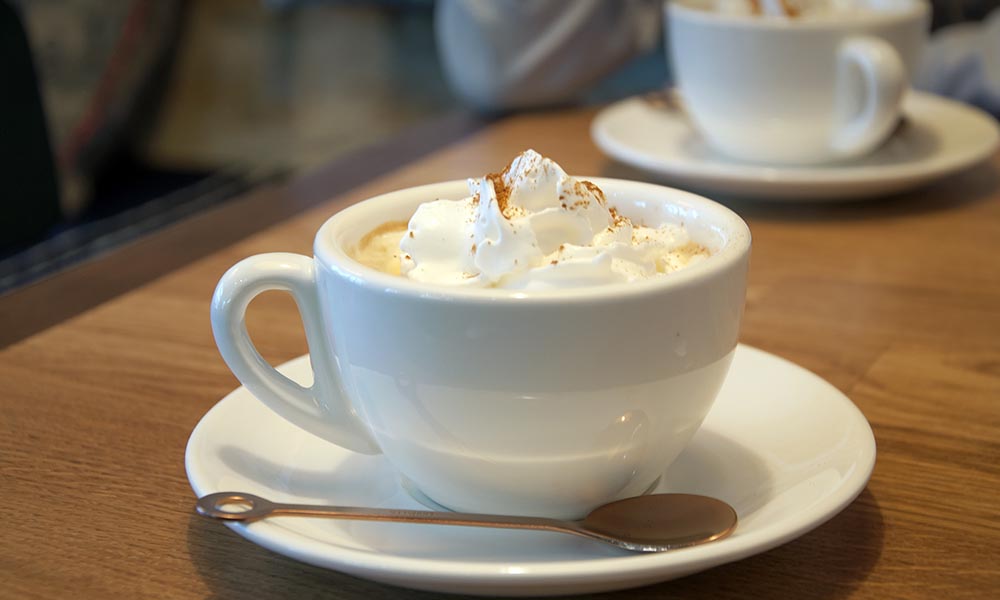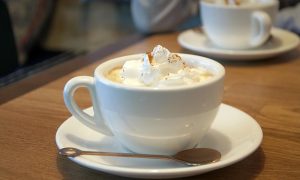

The Viennese coffee, also known as Caffè Vienna or cappuccino with cream, is a drink steeped in charm and tradition. With its elegant appearance and well-balanced flavour, this special coffee blends the richness of espresso with the sophistication of whipped cream. Many immediately associate it with Viennese culture, yet the roots of Viennese Coffee draw from various European influences. Thanks to its simplicity and luxurious texture, it has become a global coffee icon. In this article, we’ll explore how Viennese Coffee emerged as a symbol of sociability and culture — and how you can easily recreate it at home for a moment of pure indulgence.
Origins and history of Viennese coffee
Viennese coffee traces its roots back to the historic coffee houses of Vienna, which rose to prominence between the 17th and 18th centuries. These establishments quickly became renowned meeting places for artists, poets, philosophers, and intellectuals. The Viennese coffee culture began to take shape following the Battle of Vienna in 1683, when the retreating Ottomans left behind sacks of coffee beans. The Viennese, curious about this exotic product, began to experiment with it, developing new ways to serve and enjoy it. This marked the birth of the Viennese café tradition — where coffee wasn’t just a beverage, but a cultural experience.
In these cafés, Viennese Coffee was typically served in porcelain cups alongside a glass of water — a custom that endures to this day. The whipped cream topping helped soften the intense flavour of black coffee, making it more approachable for those who preferred milder tastes. The drink’s popularity spread quickly, and today it remains a favourite for anyone wanting to experience the true “taste of Vienna.”

How to make Viennese coffee at home
Preparing Viennese Coffee at home is a simple yet satisfying way to savour a touch of Viennese elegance in the comfort of your own kitchen. By following these steps, you can create a coffee that mirrors the authenticity and refinement of the brews served in Vienna’s historic cafés.
Ingredients:
- Coffee: The base of Viennese Coffee is a rich, aromatic espresso. Choose a high-quality coffee blend, ideally with a good proportion of Arabica beans to enhance sweet and aromatic notes.
- Whipped Cream: The hallmark of Viennese Coffee. It’s best when freshly whipped by hand or with a mixer, giving it a soft, creamy texture. Avoid aerosol creams, which melt quickly and diminish the drink’s quality.
- Cocoa powder or cinnamon (optional): A light dusting adds a fragrant finishing touch that further enriches the Viennese Coffee experience.
Preparation Steps:
- Brew the coffee: Use an espresso machine to prepare a fresh, strong shot of espresso. If using a moka pot, ensure the result is full-bodied and well-extracted.
- Pour the coffee: Serve in a wide cup or, for a more dramatic presentation, use a clear glass to highlight the contrast between the dark coffee and the white cream.
- Add the whipped cream: Spoon a generous layer of whipped cream on top of the coffee, taking care not to mix it in. This lets you first taste the sweetness of the cream, followed by the coffee’s boldness.
- Finish with cocoa or cinnamon: A light sprinkle adds a visual and aromatic flourish.
You can personalise your Viennese Coffee by adding a dash of vanilla to the cream or a splash of hazelnut syrup for a sweeter, more enveloping taste.
Viennese Coffee is more than just a beverage: it’s a journey through history, a nod to a time when cafés were hubs of culture and conversation. Making it at home lets you bring a touch of Vienna’s magic into your daily life, where coffee becomes more than a break — it becomes a cherished ritual.
For an even more authentic experience, serve your Viennese Coffee with a traditional dessert like Sachertorte or apple strudel, and transform your kitchen into a little corner of Vienna.
Preparing and enjoying Viennese Coffee is a small luxury you can treat yourself to every day. With just a few ingredients and a bit of attention to presentation, you’ll create a drink that delights the eyes and the palate — making every moment of relaxation just that little bit more special.